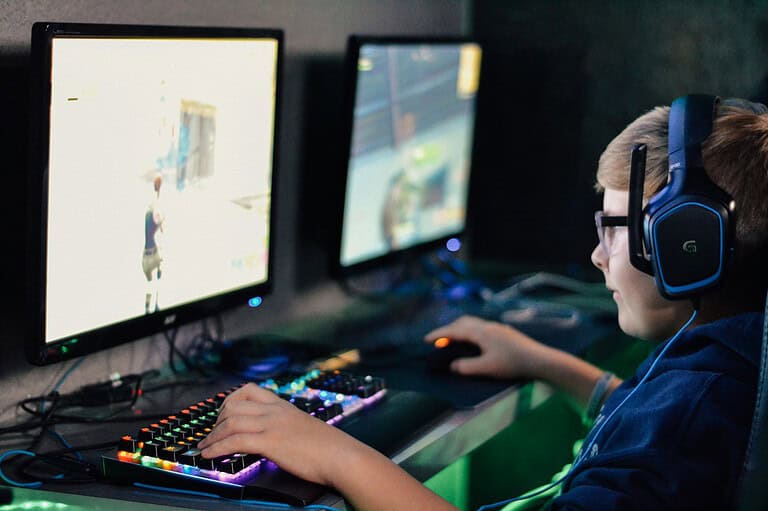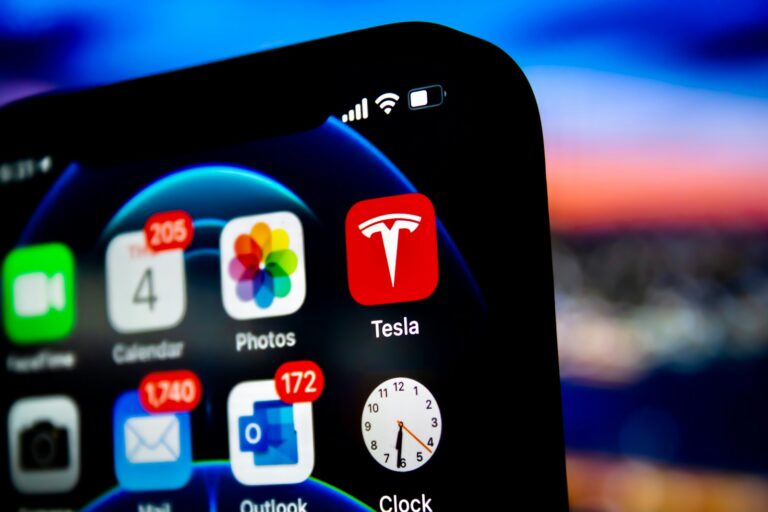
In today’s busy world, getting dinner on the table can feel like a challenge for many families. Technology, often blamed for distracting us from family time, can actually become your greatest ally in meal preparation. Smart devices, meal planning apps, and online grocery services can cut your dinner prep time in half while helping you create healthier, more varied meals for your loved ones.
While some worry about technology at the dinner table, the right tech tools used at the right time can actually bring families closer together. From recipe apps that suggest meals based on ingredients you already have to voice assistants that can set multiple timers while your hands are busy chopping vegetables, technology offers practical solutions to make family dinners happen more consistently.
The goal isn’t to replace family connection with screens but to use digital tools strategically so that when everyone sits down to eat, the focus can be on each other. Many families have found that using technology wisely during meal preparation creates more opportunities for meaningful conversations and connection when they finally gather around the table.
1. Plan Smarter with Meal Planning Apps
- Apps like Paprika, Mealime, or Yummly let you:
- Save and organize recipes.
- Auto-generate grocery lists.
- Suggest meals based on what’s already in your fridge.
- Pro Tip: Sync meal plans across devices so everyone in the family knows what’s for dinner.
2. Shop Efficiently with Grocery Delivery & Pickup
- Use Instacart, Amazon Fresh, or Walmart Grocery to order ingredients and have them delivered.
- Many stores offer curbside pickup — saving you time and avoiding long lines.
- Some apps even suggest recipes based on your cart.
3. Cook Smarter with Smart Kitchen Gadgets
- Smart ovens & air fryers: Preheat remotely and get notifications when food is ready.
- Instant Pot with Wi-Fi: Control cooking from your phone.
- Smart meat thermometers (like Meater): Track internal temps without opening the oven.
- Voice assistants (Alexa, Google Assistant, Siri): Hands-free timers, conversions, and step-by-step recipe help.
4. Use Your Phone or Tablet as a Digital Cookbook
- Mount your device in the kitchen (using a stand or magnetic holder).
- Open recipe apps or YouTube tutorials for step-by-step cooking guidance.
- Many apps offer guided cooking modes that adjust steps as you go.
5. Automate the Atmosphere
- Set the mood with smart speakers: play background music, podcasts, or even cooking instructions.
- Use smart lights to create a cozy dinner vibe when food is ready.
6. Keep the Family Connected
- Use shared calendars (Google Calendar, Cozi) to schedule family dinners.
- Set reminders or smart speaker announcements to let everyone know when it’s time to eat.
- Try interactive dinner games via voice assistants (like trivia or riddles) to keep kids engaged at the table (source: The Family Dinner Project).
7. Balance Tech at the Table
- While tech helps get dinner ready, it can also distract during meals.
- Consider a “no phones at the table” rule or use tech only for fun family activities like trivia or conversation starters (source: Mobicip).
✅ Quick Tech-to-Table Checklist
- Plan meals with a recipe/meal planning app
- Order groceries online or schedule pickup
- Use smart kitchen gadgets for faster cooking
- Follow recipes on a tablet/phone stand
- Automate music & lighting for dinner vibes
- Use shared reminders to gather the family
- Limit tech distractions at the table
⚡With the right tools, your tech doesn’t just save time — it can turn dinner into a smoother, more enjoyable experience for the whole family.
Key Takeaways
- Technology tools can streamline meal planning, shopping, and preparation to make family dinners more manageable in busy households.
- Strategic use of apps and smart devices before mealtime can actually create more opportunity for screen-free family connection during dinner.
- Creating a balance between helpful tech use during preparation and mindful tech boundaries during eating helps families enjoy the benefits of both worlds.
Understanding the Role of Technology in Family Dining
Technology has transformed how families interact during meals, creating both opportunities and challenges for meaningful connection. Finding the right balance requires thoughtful consideration of how devices affect communication and togetherness.
The Impact of Electronics on Mealtime
When phones and tablets join family dinners, they often change the dining experience significantly. Research shows that TV-watching during dinner leads to higher calorie intake and fewer fruits and vegetables consumed.
Constant notifications interrupt conversations, making it difficult for family members to fully engage with each other. Children often model their behavior after their parents, so adults checking messages during dinner signals that digital distractions take priority over face-to-face interaction.
Many families report feeling disconnected despite sitting at the same table when screens are present. Texting friends or scrolling through social media creates invisible barriers between family members who are physically present but mentally elsewhere.
Benefits of a Tech-Free Dinner Table
Implementing a No Electronics policy at the dinner table can significantly enhance family connections. Without screens, conversations flow more naturally, and family members make more eye contact.
Children develop better communication skills when engaged in regular tech-free family dinners. These skills transfer to other social situations and can improve academic performance.
Tech-free meals also help everyone practice mindful eating, leading to:
- Greater awareness of hunger and fullness cues
- More appreciation for food flavors
- Lower risk of overeating
- Better digestion
Many families report feeling closer after establishing device-free dinner times. The Family Dinner Project notes there’s no single right answer to how much technology belongs at the table, but being intentional about the choice matters most.
How to Leverage Technology for Meal Planning
Technology has revolutionized how we approach planning meals. With the right digital tools, busy families can streamline grocery shopping, reduce food waste, and get dinner on the table with less stress.
Digital Meal Planning Tools
Several apps and websites now make meal planning easier than ever. ChatGPT can transform meal planning by generating personalized weekly plans based on dietary preferences and available ingredients. Users report significant time and money savings with this approach.
For more structured planning, platforms like Food on the Table organize groceries by department after creating a weekly meal plan. This free tool helps shoppers navigate stores efficiently and avoid impulse purchases.
Excel spreadsheets and Google Drive can also be powerful meal planning allies. Families can create organized two-week meal plans that track ingredients and shopping lists in one centralized location. This method works well for households that prefer more control over their digital organization.
Online Recipes and Cooking Guides
Pinterest has become an essential resource for meal planning enthusiasts. Users can create boards dedicated to weekly meals, seasonal recipes, or specific dietary needs. The visual nature of the platform makes it easy to browse and save recipe ideas for future reference.
When using AI for recipe suggestions, experts recommend having a conversation with the technology. Being specific with prompts yields better results, and users should feel comfortable asking for revisions if suggestions don’t match their preferences.
Social media platforms like Instagram and TikTok now feature countless food creators sharing quick meal ideas. Many focus on family-friendly options with short ingredient lists, making dinner preparation more accessible for busy households.
Using Technology to Enhance Dinner Preparation
Technology can transform the way we prepare meals, saving time and reducing stress in the kitchen. Modern tools and applications make it easier to plan, cook, and serve delicious meals without the traditional hassle.
Smart Kitchen Gadgets and Appliances
Smart kitchen gadgets have revolutionized home cooking. Programmable pressure cookers can turn tough chicken cuts into tender meals in minutes, while smart ovens allow remote preheating through smartphone apps. Many households now rely on voice-activated assistants to set timers or convert measurements while hands are busy preparing ingredients.
Multicookers with Wi-Fi connectivity let busy families start dinner remotely, ensuring a hot meal is ready upon arrival home. These devices often come with pre-programmed settings for different dishes, taking the guesswork out of cooking chicken to perfection.
Temperature-controlled pans and induction cooktops provide precise heat management, preventing overcooked meals. Smart refrigerators can track ingredients and suggest recipes based on what’s available, reducing food waste and simplifying meal planning.
Cooking Apps and Timers
Cooking apps serve as digital sous chefs in modern kitchens. Recipe apps offer step-by-step instructions with timers that alert cooks when to move to the next step. Many include video tutorials for techniques like properly seasoning and cooking chicken.
Meal planning apps help organize weekly menus, generate shopping lists, and even order groceries for delivery. Some popular options include:
- Ingredient scanning apps – Identify what dishes can be made with available items
- Voice-controlled timers – Allow hands-free operation while cooking
- Portion calculators – Adjust recipes automatically based on serving sizes
Tech-enhanced cooking also includes apps that synchronize with smart appliances, allowing users to monitor cooking temperatures and times remotely. This integration ensures perfect results even for challenging dishes like roasted chicken.
Digital kitchen scales with app connectivity help maintain precise measurements, particularly important in baking. Many cooking apps also offer nutritional information, helping families make healthier meal choices.
Facilitating Grocery Shopping with Tech
Technology has transformed how families plan, shop for, and prepare meals. Digital tools now streamline the grocery shopping process, saving both time and money while reducing the stress of meal planning.
Online Grocery Delivery Services
Online grocery delivery services have revolutionized how families shop for food. Services like Instacart have introduced AI-powered “Smart Shop” technology that provides personalized recommendations based on dietary preferences and shopping habits.
These platforms offer several advantages:
- Time savings: Eliminating travel to physical stores
- Improved organization: Digital catalogs organized by department
- Budget control: Running totals visible before checkout
- Reduced impulse purchases: Less exposure to in-store marketing
Many services also offer subscription options with free delivery, making them cost-effective for families who shop frequently. Some even provide specialized filtering for dietary restrictions, helping families with specific needs find appropriate options more easily.
Mobile Shopping Lists and Reminders
Digital shopping lists have evolved far beyond simple note-taking apps. Modern list applications sync across devices, allowing family members to add items remotely when supplies run low.
AI assistants like ChatGPT have proven particularly helpful for meal planning and shopping list creation. Users report that AI tools make grocery shopping “much easier” by organizing ingredients by store section and suggesting meal ideas based on what’s already in the pantry.
Smart home devices can further enhance the shopping experience by:
- Enabling voice-activated additions to shopping lists
- Setting reminders for regular purchases
- Tracking expiration dates of perishable items
- Suggesting recipes based on items already owned
These tools help families reduce food waste and ensure they have ingredients ready for family dinner preparations, making technology a valuable ally in the kitchen.
Encouraging Family Participation through Technology
Technology can bridge the gap between family members during mealtime planning and preparation. When used thoughtfully, digital tools can transform dinner from a chore into a collaborative family activity that everyone looks forward to.
Recipe Sharing and Collaboration Platforms
Family meal planning gets easier with digital recipe platforms that allow multiple members to contribute ideas. Apps like Paprika, Whisk, and Mealime enable families to create shared recipe collections where everyone can suggest dishes they’d like to try.
Children feel more invested in meals they helped choose. Parents report that kids are more likely to try new foods when they participated in selecting them.
Digital grocery lists can be shared across devices, allowing family members to add items they need. This collaborative approach reduces food waste and ensures everyone’s preferences are considered.
Some platforms even include nutritional information, helping families make informed choices together about balanced meals.
Interactive Cooking Games and Challenges
Gamification transforms cooking into an engaging family activity. Apps like Kitchen Stories and ChefIQ create fun challenges that get children excited about meal preparation.
Family cooking competitions inspired by shows like MasterChef encourage creativity. Parents can set up themed nights where family members use apps to find recipes matching the theme.
Video tutorials make complex techniques accessible to all ages. Children learn knife skills and measuring through age-appropriate cooking videos.
Some families use social media to document their cooking adventures. Sharing family meal achievements on platforms like Instagram creates positive reinforcement and memories. This digital record of family cooking experiences becomes a cherished collection that celebrates their time together in the kitchen.
Tech Etiquette and Mindfulness During Dinner
Finding balance between technology and meaningful mealtime interactions creates a more positive dining experience. Establishing clear guidelines and intentionally fostering conversation can transform dinner from a distracted event to a valuable connection opportunity.
Setting Boundaries for Tech Use
Creating clear rules about technology at mealtime helps establish healthy habits for everyone. Many experts recommend a “no phones on the table” policy, as devices should be turned off or silenced during meals.
Some families implement a “phone basket” where all devices are placed before sitting down to eat. This simple technique eliminates the temptation to check notifications or scroll through social media.
For necessary calls or texts, family members should excuse themselves from the table. Research indicates that using cell phones during dinner is not only considered disrespectful but may negatively impact health.
Parents should model appropriate tech behavior. Children notice when adults follow different rules than they’re expected to observe.
Promoting In-Person Conversations
Engaging conversation starters help shift focus from screens to faces. Families might try asking about the best part of everyone’s day or discussing current events appropriate for all ages.
Setting the table together creates natural opportunities for interaction before the meal even begins. This activity helps everyone transition mentally from individual activities to shared family time.
Playing simple verbal games during dinner encourages participation from all family members, regardless of age. “20 Questions” or “Would You Rather” often lead to laughter and deeper discussions.
Making eye contact and actively listening demonstrates respect and interest. When everyone feels heard, the desire to retreat into technology naturally diminishes.
Frequently Asked Questions
Technology has transformed the way we approach meal planning, preparation, and family dining experiences. Modern tools and apps can significantly streamline kitchen workflows while smart devices make cooking more precise and enjoyable.
How can technology improve meal planning and preparation?
Technology offers numerous ways to streamline dinner preparation. Meal planning apps can generate weekly menus based on dietary preferences and available ingredients.
Digital recipe platforms analyze what’s in your pantry and suggest recipes to reduce food waste. Some apps even scale recipes automatically when cooking for different numbers of people.
Voice-activated timers and conversion tools help cooks multitask more effectively in the kitchen. This hands-free assistance is particularly valuable when handling raw ingredients or multiple dishes simultaneously.
What are the best apps for recipe management and grocery shopping?
Recipe management apps like Paprika, Mealtime, and Whisk allow users to save recipes from anywhere online and organize them into categories. These platforms automatically generate shopping lists from chosen recipes.
Grocery delivery services like Instacart and Amazon Fresh integrate with recipe apps to streamline shopping. Some grocery apps track purchase history and suggest items that might need replenishing.
Budget-conscious cooking apps compare prices across stores and highlight sales on frequently purchased items. This feature helps families maintain food budgets while still creating nutritious meals.
In what ways can smart kitchen appliances assist with dinner preparation?
Smart pressure cookers and slow cookers can be programmed remotely, ensuring dinner is ready when the family arrives home. These devices often include precise temperature controls and cooking presets for consistent results.
Connected ovens and stovetops with temperature precision help prevent burning and overcooking. Many can be monitored and adjusted via smartphone apps even when the cook steps away from the kitchen.
Smart refrigerators can track inventory, suggest recipes based on what’s inside, and alert users when items are running low. Some models even integrate with grocery delivery services to streamline restocking.
What are effective strategies for reducing screen time during meals?
Creating a “device basket” where everyone places their phones before sitting down helps establish tech-free meals. According to surveys, only 18% of parents allow their children to use technology at the dinner table.
Setting clear family policies about screen use during mealtimes creates consistent expectations. Many families establish consequences for breaking these rules, such as having to wash dishes or prepare the next meal.
Designing engaging dinner conversations with question games or topic cards makes the tech-free time more appealing. This approach helps family members connect meaningfully rather than reaching for devices.
How do digital assistant devices contribute to a more efficient mealtime process?
Voice assistants like Alexa and Google Home set multiple timers, convert measurements, and answer cooking questions without requiring clean hands. This hands-free capability is invaluable when managing complex recipes.
Smart speakers can announce when dinner is ready throughout the house, eliminating the need to repeatedly call family members. Some families program reminder routines that include handwashing prompts before meals.
Digital assistants can also maintain shopping lists as ingredients run out, ensuring nothing is forgotten on the next grocery trip. Simply telling the device to add items to the list prevents the common problem of forgetting to write things down.
What are the pros and cons of using technology for family meal scheduling and coordination?
Shared digital calendars help families coordinate mealtimes despite busy schedules. These tools send automated reminders about dinner responsibilities and special meal events.
Meal planning platforms allow family members to vote on preferred dishes and note dietary restrictions. This collaborative approach increases everyone’s investment in family dinners.
However, excessive reliance on technology can reduce face-to-face communication about meals. Many families find that a balance of digital coordination with regular in-person meal discussions works best.
Digital scheduling tools can sometimes create pressure to perfectly optimize every meal. This approach might increase rather than decrease mealtime stress for some households.






